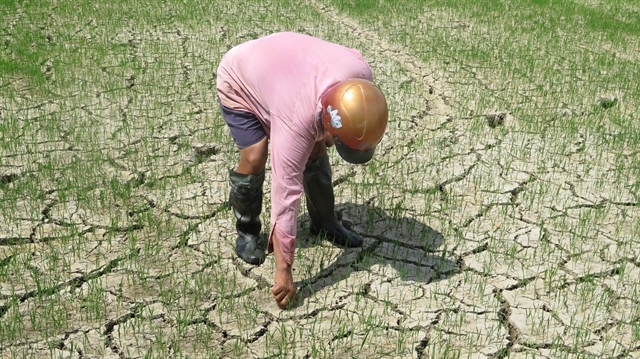 Environment
Environment


|
| Parched land after a drought in Mekong Delta in 2023. VNA/VNS Photo |
HCM CITY — The southern region, including HCM City, is expected to face a longer and more intense heat wave this year due to El Niño compared to previous years, according to weather experts.
High temperatures, reaching 36-37 degrees Celsius, have been recorded in the country’s largest city and other areas in the southern region over the past few days, leading to dehydration and fatigue among the population.
Typically, heat waves in the region start in mid-February. However, this year, the effects of El Niño have caused the heat to arrive earlier and to cover a larger area.
Lê Đình Quyết, head of the forecasting department of the Southern Regional Hydro-Meteorological Center, said the upcoming El Niño period would bring stronger heat waves than those of 2016 and 2020.
For example, in February 2016, the highest temperature recorded was 37 degrees Celsius, while by February 15 of this year, temperatures had already reached 38 degrees in Biên Hòa City, which is some 30km from HCM City.
More prolonged heat waves are expected to continue, especially during March and April, according to Quyết.
He also warned that the stronger heat waves and reduced rainfall could lead to droughts and salt intrusion in agricultural areas while also increasing the risk of erosion in Cửu Long (Mekong) Delta provinces.
Weather expert Nguyễn Ngọc Huy said climate change had contributed to abnormal weather patterns in the southern region this year.
Global weather stations worldwide have forecast temperatures during the first four months to be 0.7-1.5 degrees higher than the average temperatures recorded over the last decade, according to Huy.
There will also be more sunny days in the south than in previous years, with an increased likelihood of more rainfall and floods in the latter half of the year.
El Niño events typically bring warmer and drier conditions to the western and central Pacific, while the eastern Pacific experiences cooler and wetter conditions, according to weather experts.
This can lead to droughts, reduced crop yields and wildfires in some regions, while causing heavy rainfall, flooding, and landslides in others.
In addition, El Niño can also affect global weather patterns, leading to changes in temperature and precipitation around the world, they noted. — VNS